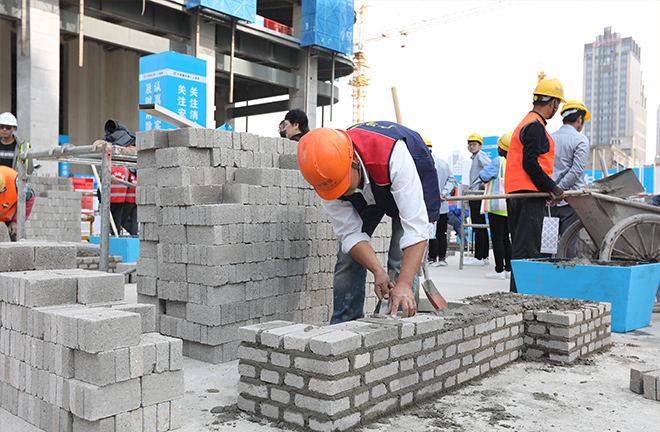Urban-rural mobility from the perspective of communication

Migrant workers in a construction site Photo: Wu Minhao/TUCHONG
The pace of China’s urban-rural migration has accelerated since the reform and opening up. Migrant workers, namely farmers who travel from the countryside to work in cities, have been a regular component of the migrant population, while tourists, retirees who move to rural areas and researchers conducting fieldwork have been less prevalent. Communication in a broad sense has played an important role in China’s urban-rural mobility over the past decades. From face-to-face interaction to exchange through various media, communication has contributed to changes in both urban-rural relations and citizen-state relations.
At the macro level, the effects of communication grow with the dissemination of public information, which has evolved along the dimensions of governance information, geographical information, and temporal information. In terms of governance information, public information is communicated through face-to-face conferences and official documents, which is subjective to the administrative system. Temporally, public information is gradually received in different communication fields, as if distanced by time. Geographically, in the era of face-to-face communication, geographic location was a core element in the diffusion of information. By the end of the 20th century, more than 90% of Chinese rural households owned a television. The state, both as a concept and a media image, was simultaneously presented on television. Facilitated by media, the imagined association between the state and society, once spatially and temporally distant, has become community-based.
At the meso level, urban-rural migration was followed by the dissemination of information. In the late 1970s, urban-rural interactions in China were concentrated in the service sector. From the late 1980s to the early 21st century, the transformation of China’s radio and television system foreshadowed a new landscape of television production and dissemination. In the first decade of the 21st century, reproductions of TV programs comprised a large proportion of online content. After 2010, a communication revolution took place with the popularization of mobile devices, giving rise to new changes in urban-rural relations.
At the micro level, movement of individuals between urban and rural areas begins with farmers migrating to cities for work. In addition to face-to-face communication, migrant workers rely mostly on television to understand urban life. In the current era of mobile communication, migrant workers shape their relations with the countryside, the city, and the larger world by sharing information about the rural life and their own lives, which constitutes another form of “presence.”
Communication has diversified the facets of social mobility. The relations between internet users and the state extend from the understanding of the concept and the image to online participation, disclosure of public information, and live-streaming, leading to changes in both the conceptual and the imaginative dimensions of social mobility. Conceptually, social mobility now implies not only opportunities but also risks. Imaginatively, urban and rural residents who were bystanders have become present and immersed in information, continually changing the way actions are embedded.
Communication has altered the temporal and spatial dimensions of social mobility. Firstly, mobility is instantaneous and immediate, allowing urban and rural residents to spontaneously produce local culture based on a sense of place. Secondly, mobility no longer solely pertains to geographic locations. As the means of communication continue to be updated, geographic locations become moving locations intertwined with the migrant population.
Communication itself has become a dynamic field of social mobility. Chinese society is transitioning from a dualistic urban-rural system to “urban and rural China.” With multi-dimensional exchanges between urban and rural residents, movement between urban and rural areas evolves through the actions of different actors. To some extent, communication alters the attributes of social mobility, while also shaping “urban and rural China” characterized by mobility.
Li Hongyan is a professor in the College of Humanities and Development Studies at China Agricultural University.
Edited by WANG YOURAN
